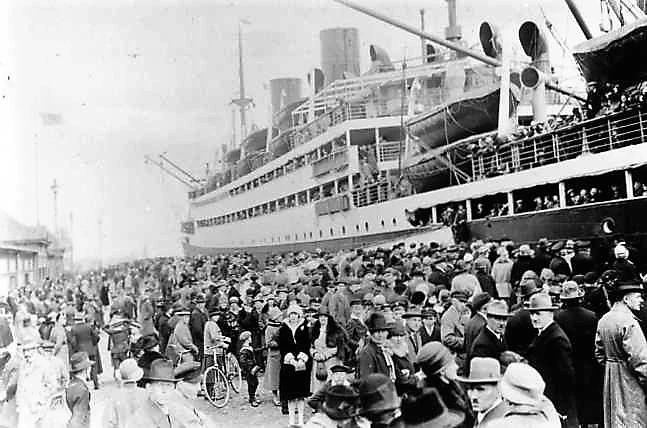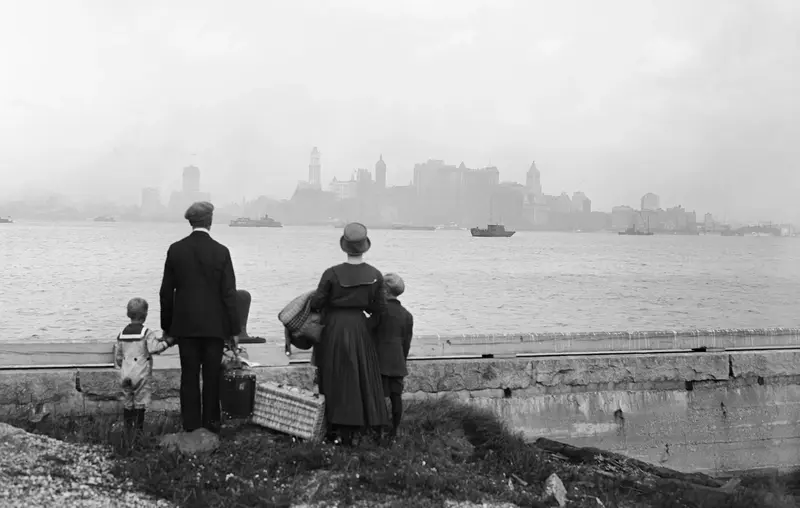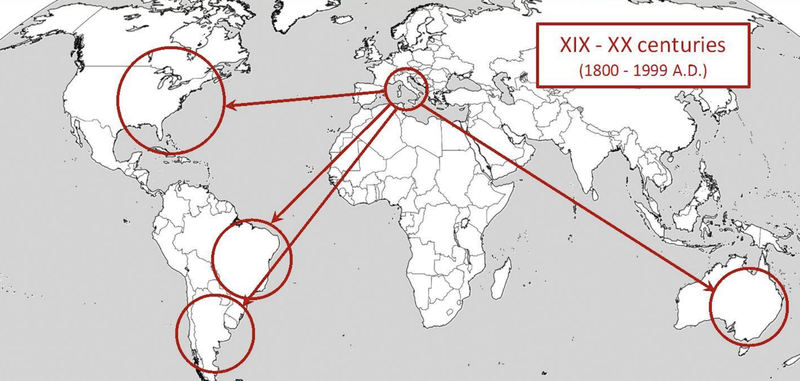Through our carefully curated tours, we bring you closer to the land your ancestors left behind, providing you with the opportunity to walk the same streets, see the same landscapes, and experience the same traditions that once defined their lives.
But when exactly did this mass migration take place? Let’s explore its timeline and key factors.

A crowded port scene from the early 20th century, with hundreds of immigrants arriving on a large passenger ship, carrying hopes of a new life in a foreign land.

Bettmann
(Original Caption) 8/13/1925-New York, NY: Above is a striking photo showing a little immigrant family on the dock at Ellis Island, N.Y., just having passed the rigid examination for entry into the “land of promise” looking hopefully at New York’s skyline while awaiting the government ferry to carry them on to the land of the free.

Approximately 70% of Italian emigrants originated from Southern Italy, but large numbers also came from Northern regions like Friuli Venezia Giulia and Piedmont.
Multiple economic and social factors contributed to this mass departure:
“Poverty and hunger pushed thousands to seek a better future elsewhere.”

Upon reaching the United States, most Italian immigrants were processed at Ellis Island, where they underwent three days of medical and psychological examinations.
The journey was not just about physical displacement, immigrants also suffered from prejudice and social rejection:
“In 1924, Henry Fairfield Osborn, the president of the American Museum of Natural History, stated: ‘These immigrants are turning the United States into a dumping ground for undesirable citizens.’”
.Despite these hardships, Italian immigrants persevered, working tirelessly to establish communities and integrate into their new countries.

Are you ready to uncover your Italian heritage?
📩 Contact us today and start your journey back to your roots!